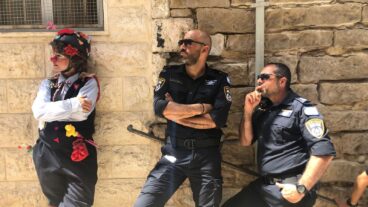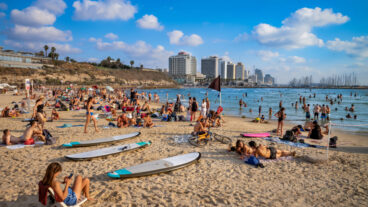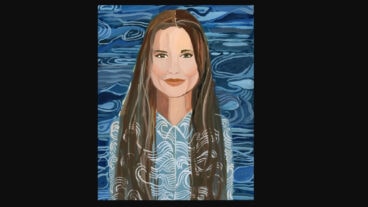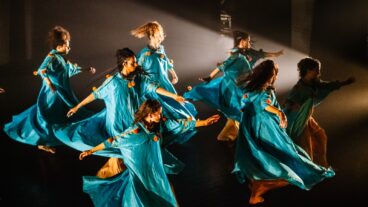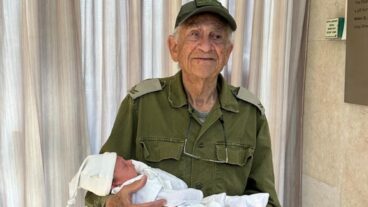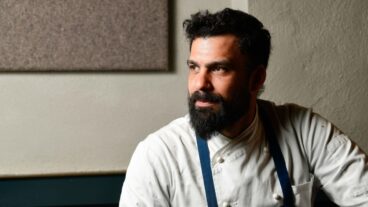Doron Polak pairs the works of Jewish and Arab Israeli artists and takes them on the road in international seminars for schoolchildren and adults.
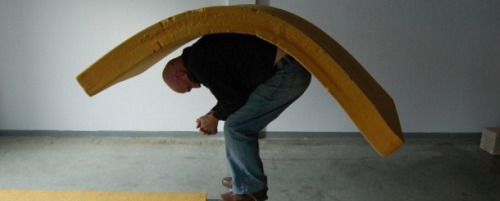
Doron Polak’s work presenting Israeli art to the rest of the world goes way beyond promoting individual artists. “Anytime I organize an exhibit I do so with a social action goal in mind,” he tells ISRAEL21c.
Fifty-six-year-old Polak is a curator and art producer who has organized more than 50 overseas exhibits of Israeli artists at places like the Edinburgh Fringe Festival, the Venice Biennale and the National Museum in Mexico.
One of his goals is to help people around the world to better understand Israelis from all walks of life. “The language of art has the potential to bridge differences between people, no matter how different their religious or ethnic backgrounds may be,” he insists.
With that goal in mind, several years ago Polak began to work with a Paris-based organization called Memoire-a-Venir (Memory of the Future). Each month, the works of a different Jewish Israeli artist are paired with the works of an Arab Israeli artist and incorporated into a program that includes lectures for adults and seminars for schoolchildren.
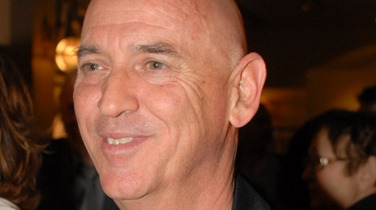
Breaking down stereotypes
“Collaborating with Doron on this program has done a lot toward breaking down stereotypes of what people here in France have of Israelis. The show has helped people see how much Israelis of all walks of life including Jews, Muslims, Druze and Circassians, have in common,” says Margalit Berriet, curator of the program.
Polak has frequently organized projects involving both Arab and Jewish Israeli artists with a message of co-existence in mind. A show called The Artists – Messengers for Peace, based on contributions from more than 100 Israeli artists, toured North America and Europe and is currently housed in the Zionist Organization of America House in Tel Aviv.
Polak has also initiated many projects aimed at increasing awareness about environmental issues. A project called Net Art dealt with the issue of how societies relate to electricity poles. “The paradox of electricity posts is that in the developed world they have a negative connotation and are considered an ugly eyesore with attempts made to keep the electrical grid underground,” says Polak. “However, in the developing world the appearance of electricity poles is welcomed. Every time a remote village is connected to the national grid it is considered a sign of progress.”
To raise awareness of these issues and to make people think about the complexity of energy issues, Polak invited about 20 Israeli artists to create works of art on this theme. The project was sponsored by German and Israeli electric companies and the works of art were exhibited in both Germany and Israel.
The shows that Polak assembles usually comprise three elements: A chance for Israeli artists to express themselves; an opportunity for a corporate sponsor to enhance its community relations; and increased awareness about Israeli art in the international community.
Promoting what Israelis are all about
Polak came upon the idea of serving as an art promoter while working at the Arieli advertising agency in Tel Aviv where he was in charge of community activities for an agency client – the Israel Electric Corporation.
Previously, he studied art at Tel Aviv’s prestigious Thelma Yellin arts high school and at Tel Aviv University, as well as art management at the University of Haifa. He also founded an improvisational theater and movement group called the Tara Theater Group, which he both manages and performs with.
In 1993, Polak became Israel’s representative at the International Artists’ Museum, a global umbrella group of artists that helps to develop multinational art projects. Through the Artists’ Museum Polak recruited Israeli artists to participate in shows at the Kassel Documenta in Germany, the Orensanz Center in New York, the Museum of Modern Art in Barcelona, and the Habitat Center in New Delhi.
Jean Bloch Rosensaft, the director of the Hebrew Union College – Jewish Institute of Religion Museum in New York, has collaborated with Polak on a number of exhibits including a multi-media installation by Israeli artist Yaakov Chefetz that explored issues of home, displacement, and reconstruction. “Doron has become a bridge between emerging and established Israeli artists and our museum,” says Bloch Rosensaft.
Polak is currently curating a show of about 20 Israeli artists in Singapore. “It’s the first major show of Israeli artists in that country and I hope that it will help people in Singapore gain a deeper understanding of what Israelis are all about.”






